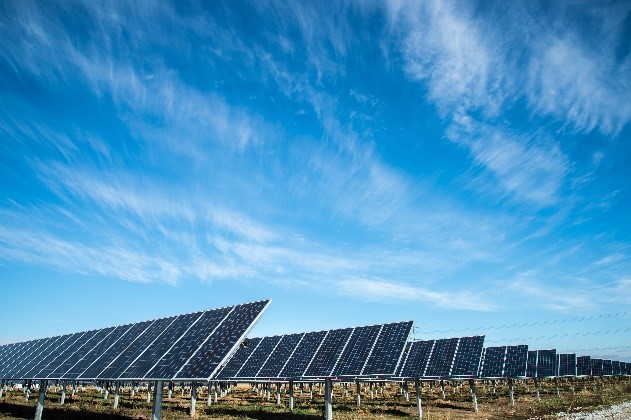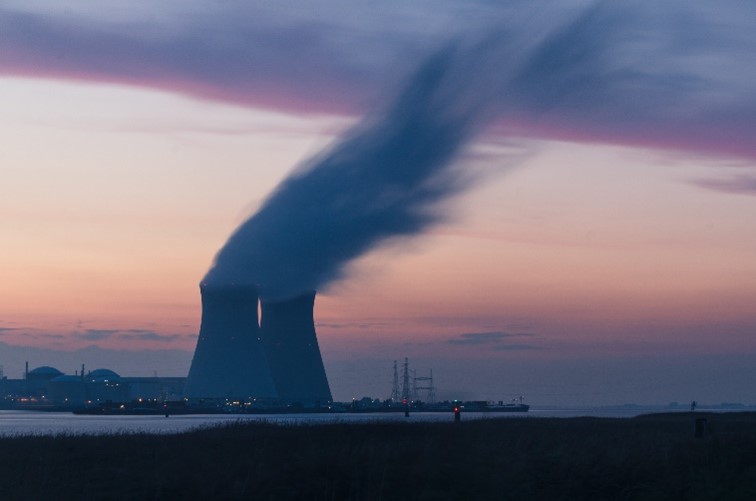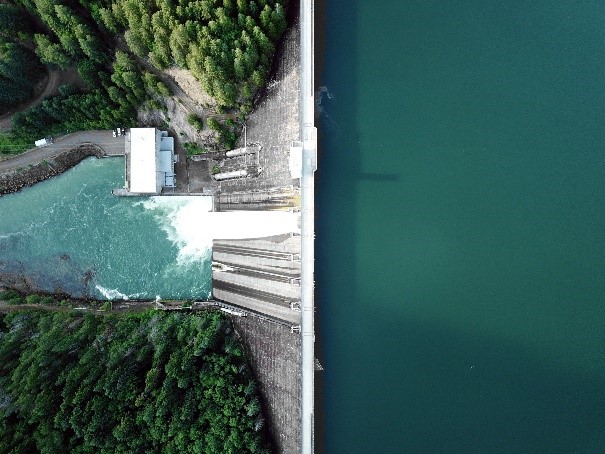What is Low-Carbon Energy?
Low carbon energy refers to energy generated with a reduced level of carbon dioxide emissions. By decreasing the amount of CO2 we produce we can reduce the effects of climate change and contribute to a healthier planet.
Types of Low-Carbon Energy Production
There are four main types of low-carbon energy: wind, solar, hydro and nuclear.
Wind Power
A wind turbine harnesses the power of the wind to generate electricity. As the wind flows through the turbine blades, their aerodynamic design generates opposing air pressures — lift and drag. The lift force surpasses the drag, resulting in the rotation of the turbine. This spinning motion is linked to a generator, converting the kinetic energy into electricity.
Wind speeds and patterns exhibit variability based on location, leading to the classification of turbines into three categories: Land-based, Offshore, and Distributed (located near the intended energy consumption site)

Solar Power
Solar power is the act of harnessing sunlight to create energy, which can be utilised for either electricity generation, storage in batteries or thermal storage. Photovoltaic (PV) panels facilitate this process – when the sunlight shines on the panel, the internal cells absorb the energy, generating electrical charges that move in response to an internal electrical field, resulting in the flow of electricity.
Much like wind power, solar energy systems come in various types. Residential systems are commonly installed on homes and businesses, while solar power plants contribute energy to the grid.

Nuclear Power
Nuclear energy is a form of energy released from the nucleus (core) of an atom. This can be produced in two ways: fission – energy from a nucleus splitting – or fusion – energy from nuclei fusing together.
Current nuclear reactors use nuclear fission to create energy for the grid. The reactions create energy in the form of heat and radiation, the heat is then converted through a similar process as fossil fuels. To produce energy using fossil fuels, the fuel is burnt, and the heat produced powers a steam turbine. The burning of the fuel produces CO2. Whereas the heat created in a nuclear plant emits no CO2.

Hydro Power
There are many types of hydropower facilities, but all of them are powered by the kinetic energy of flowing water. The energy that flowing water can provide depends on both the volume of water and the change in elevation of water transfer, the more water and the higher the elevation, the more electricity that can be generated.
Similar to wind, the flowing water spins blades in a turbine, which in turn spins a generator.

How do Low-Carbon Energy Sources compare?
Reliability and Availability

Wind and Solar power are classed as variable renewable energy (VRE) sources. As said in the name, these sources are variable, thus energy is not available on demand. Generation is uncertain and difficult to predict.
Nuclear power is classed as a conventional power plant. Nuclear plants can run constantly and are seen as a reliable baseload for renewables such as wind and solar as they produce electricity 24/7.
Hydropower is classed as a dispatchable renewable-energy plant. Certain hydroelectric plant designs meet peak demand, this can be done be releasing dammed water through turbines on demand and thus, are able to generate power 24/7.
| Energy Source | Land Use | Greenhouse Gas Emissions | Global Electricity Contribution | Water Usage |
|---|---|---|---|---|
| Offshore Wind | 8.4-247m2 per MWh | 4 tonnes per gWh | 7% | 0-0.64 litres per kwh |
| Onshore Wind | 0.4m2 per MWh | 4 tonnes per gWh | 7% | 0-0.64 litres per kwh |
| Solar | 3m2 per MWh | 5 tonnes per gWh | 4% | 0-0.11 litres per kWh |
| Hydro | 33m2 per MWh | 34 tonnes per gWh | 12% | 0.2-245 litres per kWh |
| Nuclear | 0.3m2 per MWh | 3 tonnes per gWh | 10% | 1514-2725 litres per MWh |
Reliability and Availability
Population and economy growth, along with rapid urbanisation is causing a growing demand for energy and the world needs a significantly increased energy supply to meet this. Almost all reports on future energy supply from major organisations suggest an increase of nuclear power to produce reliable and environmentally safe electricity on a large scale.
The future energy mix will be made up of a diverse menu of low-carbon and renewable energy, all contributing to both demand and carbon reduction targets. For the UK, wind could also play a big part in this as we are the ‘windy corner’ of Europe.
One of the main future challenges we will see will be energy storage. More specifically, large-scale grid energy storage and the recyclability and lifetime of the batteries used to do so.
Explore Further
Choose from the articles below to continue learning about nuclear.
The fascinating history of the UK Nuclear Sector
Nuclear Reactor Generations – A Story of Innovation and Improvement
Cherenkov Radiation – The Ethereal Blue Glow
The Bikini Atoll – An Enigmatic Pacific Paradise
Did you know? Explore Nuclear also offers great careers information and learning resources.
Below you can find references to the information and images used on this page.
Content References
- Low Carbon Energy Definition – Low-Carbon Energy | Types & Sources | EDF (edfenergy.com)
- How Wind Turbines Work – How Do Wind Turbines Work? | Department of Energy
- How Solar Power Works – How Does Solar Work? | Department of Energy
- How Nuclear Power Works – What is Nuclear Energy? The Science of Nuclear Power | IAEA
- How Hydro Power Works –How Hydropower Works | Department of Energy
- Comparisons –
- How does the land use of different electricity sources compare? – Our World in Data
- What are the safest and cleanest sources of energy? – Our World in Data
- Nuclear power and its water consumption secrets – Monarch Partnership
- 001.docx (cetjournal.it)
- System-Challenges-04 (bcg.com)
- Nuclear Power is the Most Reliable Energy Source and It’s Not Even Close | Department of Energy
- The Top Pros And Cons of Hydropower | EnergySage
- Future Trends – The UK’s future energy mix (imperial.ac.uk)
Image References
- Wind Turbine Photo by Mike Setchell on Unsplash
- Solar Power Photo by American Public Power Association on Unsplash
- Nuclear Plant Photo by Frédéric Paulussen on Unsplash
- Hydro Power Photo by Dan Meyers on Unsplash
- Capacity Comparison Photo – https://www.energy.gov/ne/articles/nuclear-power-most-reliable-energy-source-and-its-not-even-close
- Other images kindly provided by Pexels
